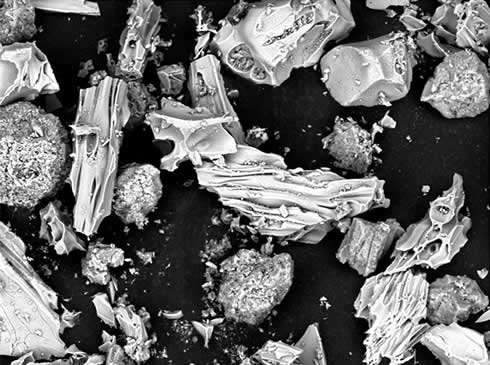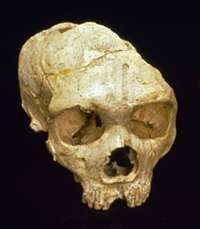Invisible volcanic ash gives clues to Neanderthal demise

(Phys.org) -- Invisible to the human eye, cryptotephra is a fine volcanic glass that is blasted out of erupting volcanoes along with ash. It leaves behind a hidden layer, in the earth, which has now been detected, giving clues about why the Neanderthals died out.
About 40,000 years ago, a layer of cryptotephra particles carpeted a huge area of Central and Eastern Europe after a massive volcanic eruption in Italy called the Campanian Ignimbrite (CI).
This eruption, and the resulting environmental and climatic disruption, has been suggested as a factor in the extinction of the Neanderthals. Interaction with us, modern humans, is one of the other possibilities.
Neanderthals, who were our closest relatives, had been living in Europe for hundreds of thousands of years. But all physical evidence of them disappears after about 30,000 years ago.
Early modern humans were known to have arrived in Europe at least 35,000 years ago, having originated in Africa, but precise dates, and the length of time they overlapped with the last Neanderthals, are unclear.

Archaeological sites, many in caves, have revealed stone tools belonging to Neanderthals and to early modern humans.
Scientists have now used a new technique to detect CI cryptotephra in some of these sites across Europe and in Libya - the lighter particles of the glass means it spreads over much wider distances than ash.
The team of more than 40 scientists, including Prof Chris Stringer and Mark Lewis of the Natural History Museum, published their research in the Proceedings of the National Academy of Sciences last week.
They found that the CI cryptotephra lies above, and so is younger than, the layers where modern human stone tools began to replace Neanderthal stone tools, in 4 central European sites.
This means that the Italian eruption happened after the Neanderthals had already declined and so it couldn't have been the cause of their extinction.
The team says that the CI volcanic eruption, and severe climatic cooling that happened around the same time, did not have a lasting impact on Neanderthals, or early modern humans.
Modern humans had already arrived in Europe by 40,000 years ago, and posed a greater threat than natural disasters to the survival of other humans living there, they say.
The issue may have been increased competition for resources, with modern humans being better able to take advantage of their surroundings. Or possibly conflict - genetic studies suggest there was certainly close contact between Neanderthals and early modern humans who left Africa, including some interbreeding.
Either way, it is looking more and more likely that modern humans were implicated in the demise of the Neanderthals.
Provided by Natural History Museum





















